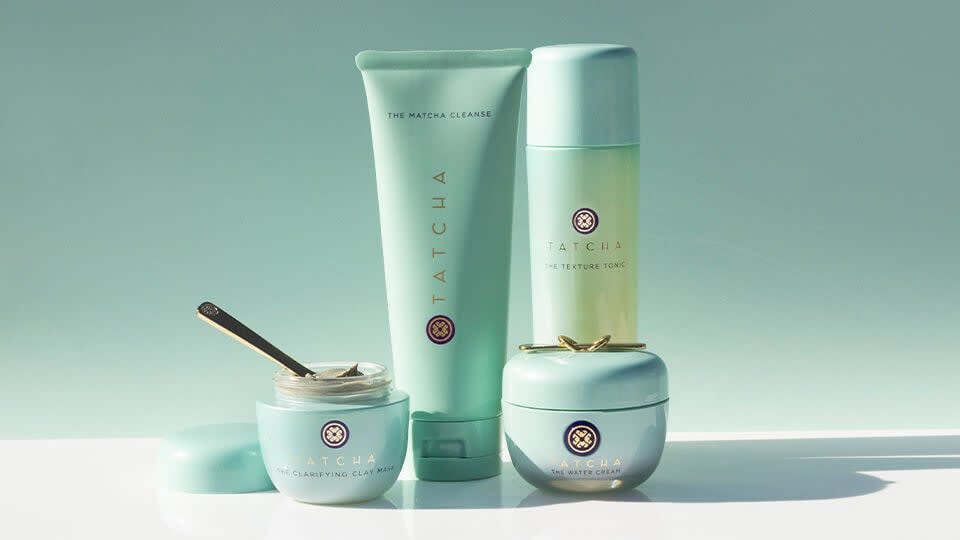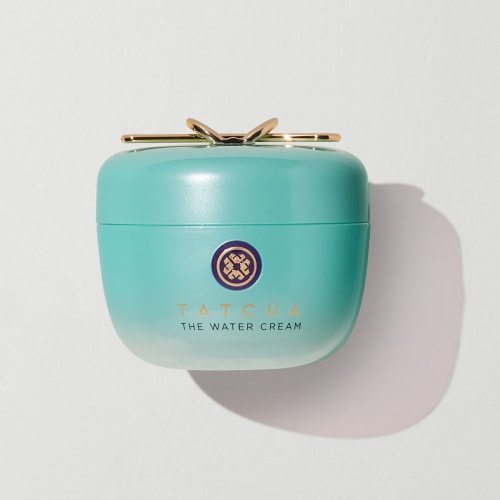Pore size is a part of our genealogy that we cannot change, no matter what we do. But the right skincare routine can help improve the appearance of large pores, blackheads, and more facets of oily skin.

Your fingerprints, your irises, the sound of your voice—all of these things are unique to you. Genes may be borrowed from your ancestors, but the way they express themselves in every body gives us our unique human signatures. The pores on your skin are no different.
The word “pore” refers to one of the many millions of small openings on the outermost layer of your skin (the epidermis) that channel into a lower layer of skin (the dermis). Some of them contain hair follicles, and many contain sebaceous glands—the source of oil production. A pore’s main function is to expel sebum, or oil, and sweat from the skin; like other channels, they can be subject to clogs, and sometimes require the deft hand of a skincare professional to effectively extract from within.
It’s common for pores to become a focus of our attention, as a large concentration of our body’s pores are on the face. (Cue the scene from Mean Girls when Regina George is staring in the mirror, whining about her huge pores.) But it’s worth pointing out that many of the pores on our body are invisible, according to dermatologists. Technically, those pores that we can see qualify as “large” pores. And though you may be disappointed to hear that their size cannot be changed, their visibility certainly can—and is the key to unlocking the best skincare for large pores.
Can you shrink large pores?
For all of our pore fascination, there is quite a bit of misinformation and junk science when it comes to these important (and omnipresent) parts of our skin. Have you heard the one about how exposing skin to cold water can shut one’s pores? Well, pores cannot physically open or close. And they can’t be shrunk, either.
As we said at the top, our pores are genetically predetermined, meaning that, like our fingerprints, we can’t simply change them. Some people are born with smaller pores than others. Even the American Academy of Dermatology Association advises on ways to make pores less noticeable, rather than disappear completely. But there are other factors that can affect how visible pores appear, such as an overabundance of oil, or dead skin, or the natural effects of skin aging. (In fact, all pores get larger with age, dermatologists say.) So while pore size can’t be changed, all of these other factors can be treated using skincare, which will help large pores appear smaller, too.
How to take care of large pores
While too much attention can be a bad thing, it’s a good idea for all skin types to be aware of their pores—no matter their natural size. Dermatologists have established how pores can clog, and how those clogs can lead to the development of acne. By keeping things clean and clear, you can unclog pores and keep clogged pores infrequent—or entirely at bay.
Exfoliating acids or scrubs. As any dermatologist will tell you, exfoliation is key to minimizing the appearance of large pores. There are a few ways to do this. One is by using a gentle scrub that can buff away dead skin, leaving pores looking tightened in the process. The other is employing a chemical like a beta hydroxy acid, which will dissolve the bonds holding dead skin cells to the skin’s surface. Whichever way you go, don’t overdo it: Over-exfoliation of any kind can be harsh on the skin.
Gel-based cleansers. Effective skin cleansing is one of your best defenses against clogged or enlarged pores. Applying heat—via steam or a warm washcloth—is a good way to loosen up any gunk that might be sitting in your pores. Then follow up with a lightweight gel cleanser, one that can reach down into skin for a deeper clean, is likely to ensure clean and clear pores.
Regular facials. As skincare technology has improved, so have in-office procedures for treating large pores. A dermatologist or licensed aesthetician might be able to recommend a stronger exfoliating treatment, like a peel, that can help minimize pores. But these professionals can also perform extractions, in which they manually express clogged pores. Talk to your trusted skincare expert to see if any of these options might be right for you.
Sunscreen. It all goes back to good sun protection. Sun damage contributes to a loss of firmness over time, which can make pores appear more noticeable. Just another reason to apply SPF every single day—even if you aren’t leaving the house.
In defense of large pores
Here’s another point worth making: Your pores are your own. You can’t change them, so you might as well learn to love them.
It helps to think of pores not as facial annoyances, but as powerful skin tools, and another one of skin’s many exquisite mechanisms. When a sebaceous gland secretes sebum, the pore makes it possible for that sebum to travel upward, where it can lubricate the outer layer of skin. They can also help expel other substances like sweat. These pores do more than help skin—they are necessary to its function.
Treating your pores with proper skincare—gently cleansing, exfoliating, and moisturizing—can and will have a visible benefit, by making these openings less pronounced and noticeable. This kind of skincare won’t shrink them, and certainly won’t erase them, but it can help diffuse and soften the look of large pores. Bonus points if it primes the skin for makeup that can provide additional blurring benefits.
The best skincare for large pores
A good skincare routine that can benefit large pores should focus on properly cleansing and exfoliating the skin. It would be wise to look for a face wash that has exfoliating ingredients as well as a texture suited to oily skin—these formulas are known for a deeper clean than some of their market counterparts.
The skincare brand Tatcha, which designs its award-winning formulas around powerful active Japanese botanicals, recently launched The Matcha Cleanse, a cleanser specifically suited for oily skin and the large pores that can accompany it. The gel cleanser lathers into a soft foam that decongests pores without stripping skin. Its main ingredient, Kyo-Matcha, is an antioxidant-rich strain of green tea and a staple in the Japanese diet—one of the ultimate life-giving plants. BHA alternatives from coix seed extract and mugwort help to loosen dead skin cells, clearing the way for skincare to follow.
A few times each week, you may be inclined to add an exfoliant to your routine. Tatcha’s Rice Powder Deep, made from finely milled rice bran, is beloved by oily faces for its ability to cleanse deeply and gently—and its oil-balancing and pore-tightening effect, thanks to Japanese wild rose. For those who prefer chemical exfoliation, the Texture Tonic combines wild rose with fruit-derived alpha hydroxy acids that refine skin and encourage cell turnover. (Plus, it’s gentle enough for daily use.)
A lightweight moisturizer will provide the final seal to keep pores smooth and skin soothed—and there’s no better choice than Tatcha’s best-selling Water Cream, clinically proven to refine pores with a BHA alternative. Keeping it light and clean is the best skincare routine to follow when dealing with large pores. They still won’t shrink, but with regular care, you’ll marvel at how they seem to disappear from view.




